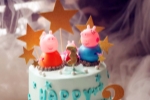
高中英语作文范文结尾句型【一】
In short, it can be said that
高中英语作文范文结尾句型【二】
1) Many nations have been faced with the problem of ……
2) Recently the problem has been brought into focus.
3) Recently the phenomenon has become a heated topic.
4) Recently the issue has aroused great concern among ……
5) Nowadays there is a growing concern over ……
6) Never in our history has the idea that …… been so popular.
7) Faced with ……, quite a few people argue that ……
8) According to a recent survey, ……
9) With the rapid development of ……,
10 When it comes to…, (当说到…
二、列举观点
I.Some people think/believe that…,
Other argue/claim that the opposite/reverse is true
1.Obviously television has both advantages and disadvantages.
2.Living in a city has both advantages and disadvantages.
3.Compared with cars,bikes have their advantages and disadvantages. ,
4.Although computers bring people a lot of convenience,they have many disadvantages.
5....has many advantages.For example,…
6. However,just as every coin has two sides,…has it’s disadvantages.
II…play(san important role/part in……
1.Computers play an important role in science and technology.
2.Computers play a more and more important role in our life.
3.Computers play an increasingly important role in our studies.
4.Education plays an important part in developing our mind.
5.Addiction to alcohol and drugs plays a role in homelessness.
6.Advertisement plays an informative role in our daily life.
7.In the past,letters played a decisive role in long-distance communication.But now,telephone,email,and fax have taken their place.
III.With the development of…
1.With the development of our economy,many Chinese families can afford a car.
2.With the development of our economy and society,pollution is more and more serious.
3.With the rapid development of Science and technology,people can get a college degree by taking online-courses at home.
4.With the current social and technological developments,employees with more knowledge and higher academic degrees are needed.
5.With the rapid increase of China's population,housing problem is becoming more and more serious.
6.With more and more women entering the society,people's attitude towards women is changing.
7.With the deepening of Chinese reform and opening up, an increasing number of (a growing number of,a significant number of
families can afford a car.
三、陈述自己观点
There is probably some truth in both arguments/statements,but…
四、批驳
1)It is true that ……, but one vital point is being left out.
2) There is a grain of truth in these statements, but they ignore a more important fact.
3) Some people say ……, but it does not hold water.
4) Many of us have been under the illusion that……
5) A close examination would reveal how ridiculous the statement is.
6) It makes no sense to argue for ……
7) Too much stress placed on …… may lead to ……
8) Such a statement mainly rests on the assumption that ……
9) Contrary to what is widely accepted, I maintain that ……
10) No one can deny the fact that ……
11) The idea is hardly supported by facts.
12) Unfortunately, none of the available data shows ……
13) Recent studies indicate that ……
14) There is sufficient evidence to show that ……
15) According to statistics proved by ……, it can be seen that ……
五、结尾句型 :
英语议论文多以简要总结全文或对所讨沦的问题提出解决办法来结尾。总结全文时除常用到in one/a word,generally speaking,to conclude等外,没有固定模式。提出解决办法时却常使用下一句型:
1) From what has been discussed above, we can draw the conclusion that ……
2) It is high time that strict measures were taken to stop ……
3). We should take measures to control the rapidly increasing world population.
4). We’d better take effective measures to prevent students from cheating on exams.
5). The government decided to take strong measures against drug abuse.
6). Urgent measures should be taken to prevent terrorists from carrying out further attacks.
7) It is necessary that steps should be taken to ……
8) In conclusion, it is imperative that ……
9) There is no easy method, but ……might be of some help.
10) To solve the above-mentioned problem, we must ……
11) In summary, if we continue to ignore the above-mentioned issue, more problems will crop up.
12) With the efforts of all parts concerned, the problem will be solved thoroughly.
13) We might do more than identify the cause ; it is important to take actions to ……
14) Taking all these into account, we ……
15) Whether it is good or not /positive or negative, one thing is certain/clear……
六、其他句型
I、There be结构
There+be+主语+(修饰成分,表示客观存在的'人或事物。 There must be a lot of fuel in the tank.
There remains nothing more to be done.
There is no point in talking about it again.
There is something you don't know.
There is not enough time to do the work. .
II、名词化结构
名词化结构用以表明抽象思维的逻辑性和概念化,从而使语体更加正式、更加具有书面语风格。
1.由of连接主谓关系
That the earth revolves around the sun causes the changes of the seasons.
名词化:The revolution of the earth around the sun causes the changes of the seasons.
2.由0f连接动宾关系
One of the most important natural phenomena is that energy is transmitted from one point to another in waves.
名词化:One of the most important natural phenomena is the transmission of energy from one point to another in waves.
3.用of连接含有by的短语,把简单句转换成名词短语
高中英语作文范文结尾句型【三】
(一)改写一般疑问句:
(1)原句中有be动词的,将be动词提前,其他顺序不变。
例如:Thisisacat.变为Isthisacat?
(2)原句中有情态动词的(can/may/shall/would)将情态动词提前,其他顺序不变。例如:Hewouldlikeapie.变为Wouldhelikeapie?
(3)原句中是一般动词的,在句首加助动词do或dose(用于主语是第三人称动词单数的句子),其他顺序不变。例如:Iplaytheguitar.变为Doyouplaytheguitar.
(4)原句中的some变any。
注:以情态动词开头的一般疑问句,并且要求对方做肯定回答的`some不变。
(5)原句中的第一人称改为第二人称。例如:Iamanurse.变为Areyouanurse?
(6)以dose开头的一般疑问句,原来动词的第三人称单数形式要变回原形。例如:Hereadsastorybook.变为Dosehereadastorybook?
(二)改写否定句:
(1)原句中有be动词的,直接在be动词后面加not。例如:Itisadog.→It’snotadog./Itisn’tadog.
(2)原句中有情态动词的,直接在情态动词后加not。
例如:Iwouldlikeahotdog.→Iwouldnotlikeahotdog.
(3)原句中是一般动词的,在一般动词前加don’t或doesn’t(用于主语是第三人称单数的句子),doesn’t后面用原型。例如:Iseethreehamburgers.→Idon’tseethreehamburgers.
原句中的some变any例如:Ihavesomebreadan
dmilk.→Idon’thaveanybreadandmilk.
(4)以let开头的祈使句,如果是letus或letme,直接在其后加not;如果let后面其他人称代词宾格(you、him、her、them、it)就在let后面加助动词don’t。例如:Letusgotothepark.→Letusnotgotothepark.再如:Letthemdohomework.→Don’tletthemdohomework.
(三)对划线部分提问:
对划线部分提问,就是先把一个陈述句的划线部分去掉,然后变为一个特殊疑问句:一是特殊疑问句+一般疑问句;
二是特殊疑问句+陈述句(对主语或主语的定语提问,therebe结构除外)
⑴划线部分是人,用who提问。
⑴划线部分是主语,用who提问,who后面的动词要用第三人称单数形式。如:Whois;Wholikes;Whohas?
方法:who+原句的剩余部分
例如:①HelenandMikearelisteningtomusic.
→Whoislisteningtomusic?
②Ihavesomemodelplanes.
→Whohasanymodelplanes?
⑵划线部分是表语,用who提问。
方法:Who+剩余部分的一般疑问句形式
⑵划线部分是事或者物,用what提问。
方法:what+剩余部分的一般疑问句形式。
注:如果原句是therebe句型,直接用What’s+地点状语来提问。例如:①Wewouldliketobuysomethingsforaparty.
→Whatwouldyouliketobuyforaparty?
②Therearealotofcakesintheplate.
→Whatisintheplate?
⑶划线部分是物主代词或名词所有格,用Whose提问。
方法:⑴划线部分是主语的定语时,Whose+剩余部分
例如:Ourclassroomisbright.
→Whoseclassroomisbright?
⑵划线部分是表语或表语的定语时,Whose+剩余部分的一般疑问句形式例如:①ThewomanisSuYang’steacher.
→Whoseteacheristhewoman?
注:对某部分的定语提问,被修饰的部分跟随特殊疑问句往前提②ThispurseisYangLing’s.
→Whosepurseisthis?
⑷划线部分是地点,用where提问。
方法:where+剩余部分的一般疑问句形式
例如:TheyarehamingaMathslessonintheclassroom..
→WherearetheyhavingaMathslesson?
⑸划线部分是“多少”,用howmany或howmuch提问。
方法:⑴句中是可数名词的用Howmany+剩余部分的一般疑问句形式例如:Therearefifteentreesintheplayground.
→Howmanytreesarethereintheplayground?
⑵句中是不可数名词的用Howmuch+剩余部分的一般疑问句形式例如:Ihaveaglassofjuiceforbreakfast.
→Howmuchjuicedoyouhaveforbreakfast?
⑹划线部分是时间,用when或whattime(具体的几时几分)提问。方法:⑴when+剩余部分的一般疑问句形式
例如:SuYangandSuHaiareathomeonSundaymorning.
→WhenareSuYangandSuHaiathome?
⑵问具体的时间直接用Whattimeisit?或What’sthetime?问
例如:It’sthreeforty-five.
→Whattimeisit?或What’sthetime?
高中英语作文范文结尾句型【四】
考辅P42
1.IgaveTomthebook.//
2.Heboughthismothersomeflowers.//
3.Thebridgewasbuiltbyworkerslastyear.//
4.Wehavetofinishtheworktoday.//5.Hewilldohishomeworktomorrow.//
6.Wecleantheroomseveryday.//7.Thewriterspent3yearsonthebook.//
8.Itisabookwithalotofbeautifulpictures.//
9.Thebooksoldverywellduringthefirstweek.//firstweek.
10.Marywastheonlyoneintheoffice.//
11.Shefinishedherworkat10o’clock.//Shedidn’12.Shehadtotakeataxihomebecauseitwastoolate.
13.LizaandMikearrivedattheGreatWallintwohours.
14.Theywerehappytogettothetop.//
15.TheyenjoyedthemselvesontheGreatWall.//
16.ThepostmansentSusanandTommyapaperbox.
17.Theyopeneditandfoundapresentfromtheirfriend.
18.Theybothlikedthepresentandfeltveryhappy.
19.Alicedidn’tfeelwelltoday,soshewenttothehospital.
20.Thedoctoraskedhersomequestions.//
21.Thedoctordidn’tgiveheranymedicineintheend.
(全真1)
1.ThecapitalAirporthasbeeninusefor20years.//
2.ThecapitalAirportisthelargestoneinChina.//
3.Ihavenevertakenaplane.MyfriendLiPing,either.//
(全真2)
1.Fathergave$20formetobuysomebooks.//
2.IwasexcitedwhenIsawsomanygoodbooksinthebookstore.
3.ButsomebookswouldcostmorethanIhave.//
ButIdidn’//(全真3)
1.ManyChinesefriendswenttotheparty.2.Tonywasgivenalotofpresentsbyhisfriends.//Tony’
3.SeeinghisChineseteacheratthepartymadeTonyveryhappy.//(全真4)
1.Iwanttoeatsomething.//2.Therefrigeratorisempty.//3.Bobspentfifteenyuanonthehamburger.///(全真5)
1.Mr.Wangdoesn’tworkinthatfactoryanylonger.//
2.Mr.Wanglefthomeearlierinordertocatchthebus.3.Mr.Wangfindsitnoteasytogetalongwiththatyoungguy.//(专家1)
1.Manypeoplewentshoppingyesterday.
2.Janespent4hourstobuyNewyeargifts.//
3.Shewassotiredthatshecouldn’twalkanylonger.//
(专家2)
1.Myfriendssaidtome,“Areyoufree?”
2.Shewantedmetogoshoppingwithher.
3.Shethinksitapleasuretogoshoppingwithafriend.
高中英语作文范文结尾句型【五】
Therearesomecherriesinthebasket.(一般疑问句,否定回答划线部分提问Kittylikesthebluedress.(用thepinkdress改为选择疑问句Don`tplaywithfires.(换一种说法
Joelikesreading.Dannylikesreadingtoo.(把两句连成一句Pleaseeatsomecakesandbiscuits.(改为否定句划线部分提问Thereissomewaterintheglass.(划线部分提问划线部分提问Whatdayistoday?
What`sthedatetoday?
Whatdoyouusuallydoafterdinner?
Whichpearsdoyouwant,thegreenonesortheyellownoes?Whichwesternholidaydoyoulikebest?Whenisit?
WhatdoyoudoattheLanternFestival?
5B2
Thosebooksareours.(同义句划线部分提问划线部分提问
ThosecrayonsareDanny`s.(.(用Alice改为选择疑问句Arethesetheirschoolbags?(单数句划线部分提问
Theyridetheirbicyclestothepark.(用May改写
Thecocooniswhite.(用browng改为选择问句划线部分提问Heisfouryearsold.(改为一般过去时
Iwasathomeyesterdayevening.(改为一般疑问句
Thecaterpillarslikeeatingleaves.(改为单数句划线部分提问划线部分提问
WhatdoyoueatattheMid-autumnFestival?(根据实际情况回答
高中英语作文范文结尾句型【六】
(2)感叹法。就是对说明对象说完后表示深沉的感叹的写法。如《杨树》的结尾,就用了这种写法:让我们用一把把植树锹,在祖国的大地上写出一篇篇八十年代的新‘白杨礼赞’吧!这一感叹用于篇末,具有很强的号召力,能增强文章的感染力。
(3)展望法。就是在说明对象说明完后对其未来进行展望的方法。《宇宙里有些什么》的结尾,就用了这种方法:……今天,载人的宇宙飞船已经成功地实现了环绕地球的飞行,将来一定会揭露更多的宇宙秘密,加速人类征服宇宙的进程。篇末用展望法能给人以希望,能引起人们的联想和想象。
(4)评议法。就是对说明事物说明后加以评价和议论的方法。如《晋词》的结尾,就用了这种方法:晋祠,真不愧为我国锦绣河山中一颗璀璨的明珠。评议法用在篇末,对说明对象作个最终的评价,能有力地表达作者的爱憎感情,给人以鲜明的印象。
(5)号召法。就是对读者发号召的方法。《农作物抗病品种的培育》的结尾,就用了这种方法:毫无疑问,要使农作物产量不断地增加,不但需要不断地研究培育抗病能力更高的优良品种,还要做到各个地区各种作物都有能抗不同病害的品种。这是植物保护工作者和育种工作者的'一项重大任务。结尾用号召法能引起读者的重视,对读者产生作用。
(6)反问法。就是用否定的形式表示肯定的意思,或者用肯定的形式表示否定的意思的一种方法。《蝉》的结尾,就用了这种方法:我们猜您什么样的钹声能响亮到足以歌颂它那得来不易的刹那欢愉呢?结尾用反问法能加强气势,起强调作用,增强文章的表达效果和逻辑力量。
(7)比喻法。就是对说明对象采用比喻的方式来说明的方法《从甲骨文到口袋图书馆》的结尾,就用了这种方法:……它好象架设着一座座坚实的阶梯,召唤着不畏艰辛的人们努力攀登。结尾用比喻法不仅生动形象,还能传达深刻的寓意,给人以教育和启迪。
(8)描述法。就是对所说明的对象加以描述的方法。《雄伟的人民大会堂》的结尾,就用了这种方法:我们花了一整天时间看完这座大厦的时候,万道霞光洒在外面苍翠的树丛上,洒在杏黄色的墙壁上,洒在天安门的红墙黄瓦上,放射出一片光辉灿烂的异彩。结尾用描述法,能借此表达作者的感情,能给人以形象的感染,能给人以深刻的印象。
(9)旁补法。就是文章最后追加补充其不足的写法。《看云识天气》的结尾,就运用了这种写法:……但是,天气变化异常复杂,看云识天气自然有一定的限度。我们要准确的掌握天气变化的情况,还得依靠天气预报。旁补法有利于维护说明文的科学性和客观性,能帮助人们准确地、正确地认识客观世界。
高中英语作文范文结尾句型【七】
1:Peoples views onvary from person to person. Some hold thatHowever, others believe that
2:People may have different opinions on
3:Attitudes towards vary from person to person.==Different people hold different attitudes towards
4:There are different opinions among people as to
高中英语作文范文结尾句型【八】
1。 It is considered /thought that人们(有人,大家)认为
2。 It is generally /usually accepted /agreed/recognized that普遍(一般,通常)认为
3。 It is believed that有人(人们,大家)相信
4。 It is well—known that大家知道(众所周知)
5。 It is said that据说(有人说)
6。 It is learned that据闻(悉)
7。 It is supposed that据推测
8。 It is estimated/predicted/calculated that据估计(预计)
9。 It must be pointed that必须指出
10。 It is reported that据报道
11。 It must be admitted that必须承认
12。 It will be seen that可见(可以看出)
13。 It will be seen from this that由此可见
14。 It is understood that不用说(都知道)
15。 It can not be denied that无可否认
16。 It has been proved/demonstrated that已经证明
17。 It may be confirmed that可以肯定
18。 It may be safely said that可以有把握地说
19。 It is sometimes asked that人们有时会问
20。 It is expected that/hoped that人们希望
21。 When it comes to要说到,要谈及

















